
Han Dynasty Map, Map of Han Dynasty, Ancient China Map
Map of the Han dynasty, c. 60 B.C.E. (map: Qiushufang, CC BY-SA 4.0) Philosophy and literature flourished during the Han dynasty. Confucianism became the official government orthodoxy . A civil service was created with entrance examinations based on knowledge of Confucian texts—a system that lasted through the early twentieth century.
Map of China, Han Dynasty, circa 100 BC r/MapPorn
The map shows the Silk Roads during the Han Dynasty. Use the map's legend to discuss the goods traded and mercantilism in the ancient world. To explain the significance of the Silk Roads, show how they promoted cultural development. Explain that after the Polos arrived in China, Marco spent many years exploring Asia, and he wrote a report to.
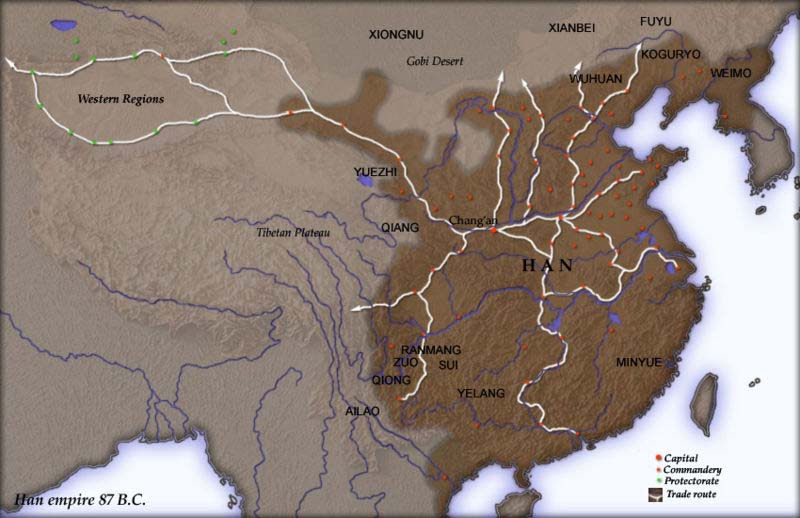
The Chinese Han Dynasty Geography & Map
Former Han Dynasty (前漢; Qián hàn) also called the Western Han Dynasty (西漢; Xī hàn) 206 B.C. - 25 AD Map is showing the geographical extension of the Han Dynasty as well as surrounding ethnic groups and tribes in the year 200 B.C. Map of the geographical extension of the Western Han Dynasty in 200 B.C. Map source: Thomas A. Lessman

ChinaHistory_Emp_Han.htm
A generation later, China flourished again under the Eastern Han dynasty (25-220 A.D.), which ruled from Luoyang, a new capital farther east in present-day Henan Province. Organized around a north-south axis and covering an area of approximately four square miles, the city was dominated by two enormous palace complexes, each 125 acres and.

The Rise and Fall of the Han Dynasty History of india, Map, Asia
The Han empire was conquered by a peasant. It was divided into three periods: the Western Han (206 BC - 9 AD), the Xin Dynasty (9-23 AD), and the Eastern Han (25-220 AD). Han Dynasty, China was known for Silk Road trade. The Han empire was much like the Roman Empire in size and population. Mahayana Buddhism was first introduced into China.

China Han Dynasty ArtiFact Encyclopedia of Everything Art, Antiques & Collectibles
Silk Road In 138 B.C., a man named Zhang Qian was sent on a mission by Emperor Wu to make contact with tribes to the west. He and his party were captured by the Xiognu tribe, but Zhang Qian escaped.

Hand Drawn Map of the Han Dynasty in the 1st Century AD. 그림
View maps and timeline of The Han Dynasty of Ancient China in the History Atlas Introduction The period of the Han dynasty formed the final phase of Ancient China. During it, key developments which had roots in previous dynasties - most notably the rise of the Confucian state - were consolidated.
.png/1200px-Han_dynasty_(60_BC).png)
Timeline of the Han dynasty Wikipedia
Han Dynasty map Photo by: Wikipedia Creative Commons The Han dynasty was a period not only known for scientific and artistic advancements, but also for the geographic expansion that took place during this period. The Han dynasty geography was characterized by expansion and a somewhat complicated system of fiefs and princedoms.

Historic Map China Han Dynasty Empire & Trade Routes 2nd Century BC
202 BCE Feb 28 Han Dynasty founded Xianyang, China Liu Bang establishes the Han Dynasty (further divided into the Western Han by historians) and renames himself Emperor Gaozu. Liu Bang was one of the few dynasty founders in Chinese history who was born into a peasant family.
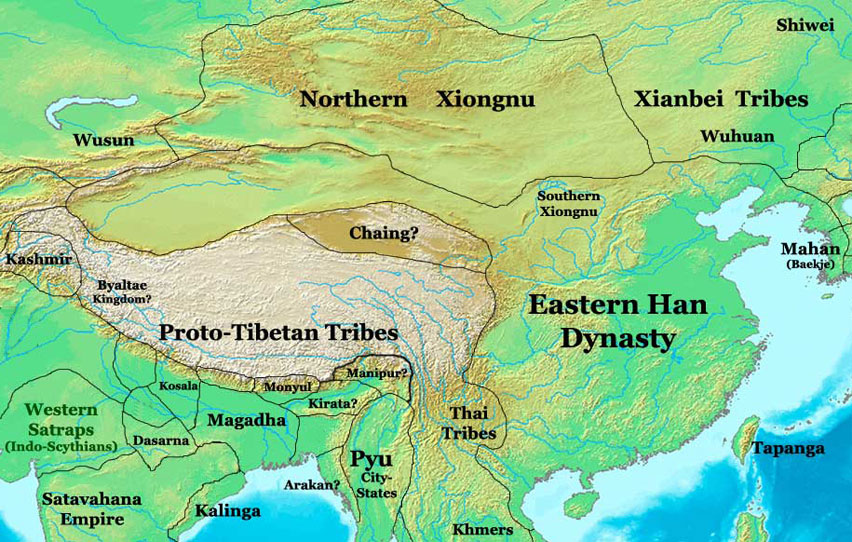
Map of the Eastern Han Dynasty, China 100 AD Nations Online Project
In 1973, three maps of the second century B.C. were discovered in a tomb from the Han Dynasty, in the city of Chang-sha in Hu-nan Province. These maps, drawn on silk, antedate by 1,300 years the two Hsi-an maps carved in stone, which were previously the aa cartographic point of view and synthesizes the many verbal descriptions of the maps. The

Han Dynasty (206 BC220 AD) Chinese History Ancient China Facts
The Han dynasty was established in 206 BC by Liu Pang (256-195 BC), who led one faction of the civil war against the tyrannical Ch'in king Cheng (c. 259-210 BC). Liu Pang learned from Cheng's mistakes and sought to develop a political structure that would bring stability and unity to the burgeoning empire.

28 The Han Dynasty Map Online Map Around The World
206 BCE Jan 1 - 220 Han Dynasty Chang'An, Xi'An, Shaanxi, Chin The Han dynasty (206 BCE - 220 CE) was the second imperial dynasty of China. It followed the Qin dynasty (221-206 BCE), which had unified the Warring States of China by conquest. It was founded by Liu Bang (known posthumously as Emperor Gaozu of Han).

A Brief History of China Han Dynasty
The Han dynasty was founded by Liu Bang (best known by his temple name, Gaozu ), who assumed the title of emperor in 202 bce. Eleven members of the Liu family followed in his place as effective emperors until 6 ce (a 12th briefly occupied the throne as a puppet).
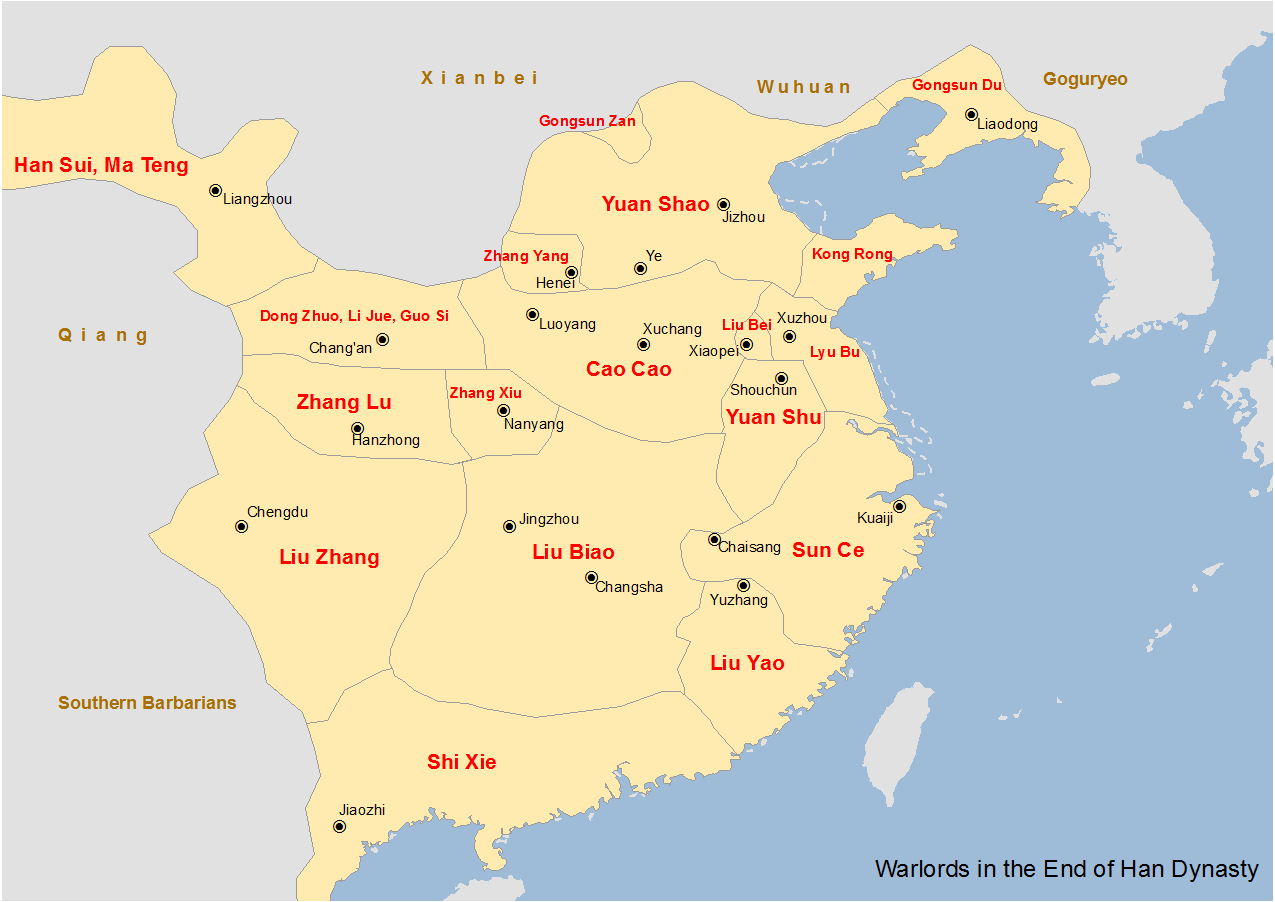
China Map showing the major warlords of the Han dynasty in the 190s AD Arsinoe Library
What is the Han dynasty known for? When was the Han dynasty founded? How did the Han dynasty fall? China: Han dynasty Map showing the extent of the Han empire c. 100 bce. Han dynasty, the second great imperial dynasty of China (206 bce -220 ce ), after the Zhou dynasty (1046-256 bce ). It succeeded the Qin dynasty (221-207 bce ).

chinesedynastiesd / D HAN MAP
Our map of the Eastern Han Dynasty (25-220 AD) shows the Han Dynasty's territory, including the Silk Road corridor in the northwest, during the latter Han Dynasty. Click the map to enlarge.
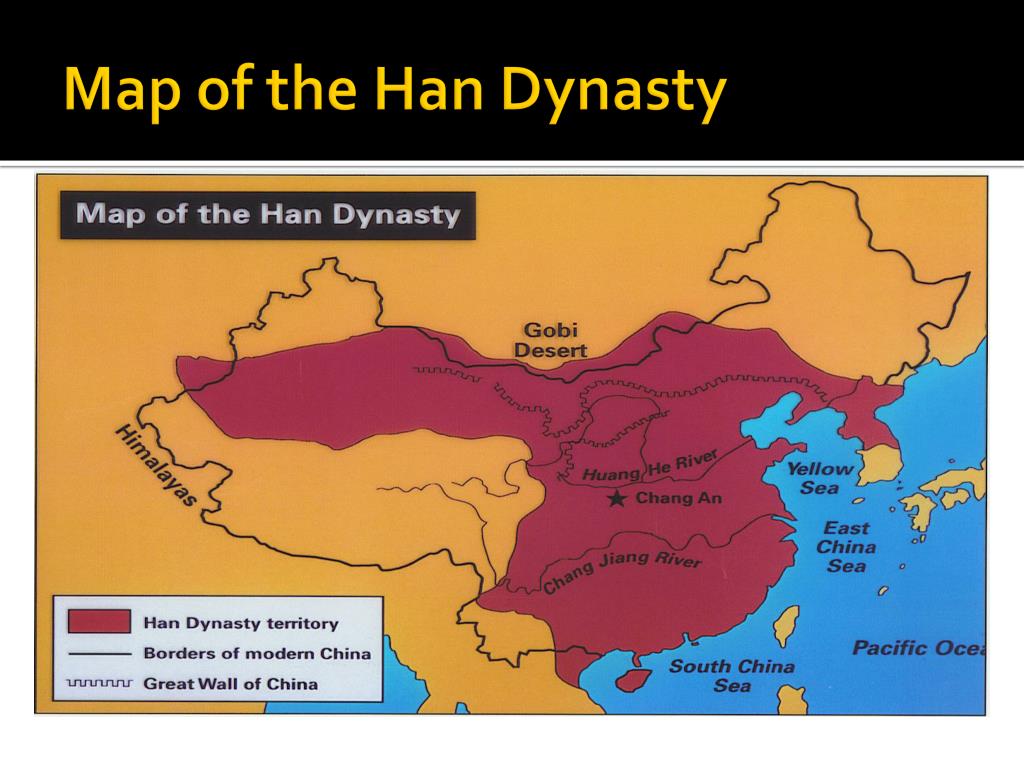
PPT HAN Dynasty PowerPoint Presentation, free download ID2420963
The Han Dynasty was ruled by 24 successive emperors from the Liu imperial family, and is normally divided into a Western Han (202 - 8 BCE) and Eastern Han (25 - 220 CE) because for a brief time an imperial in-law usurped the throne and established his own short-lived dynasty. Altogether, the Han Dynasty lasted 400 years, making it second in.